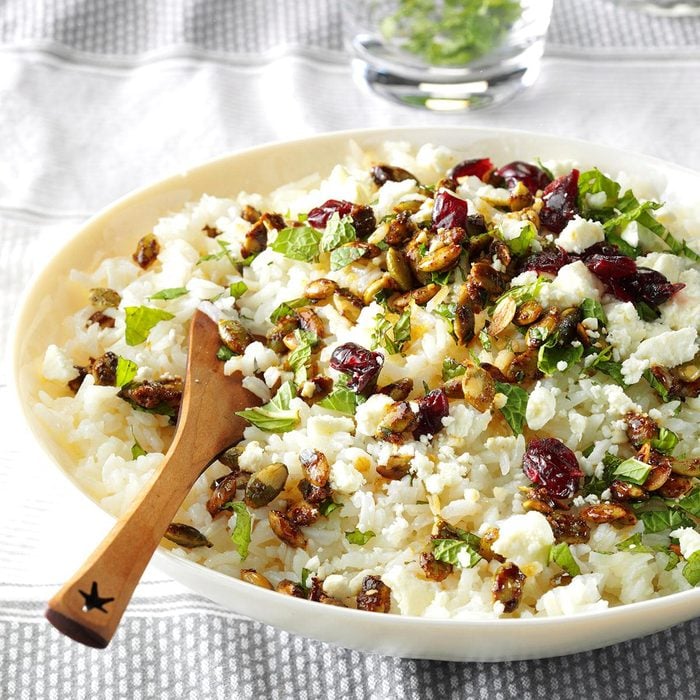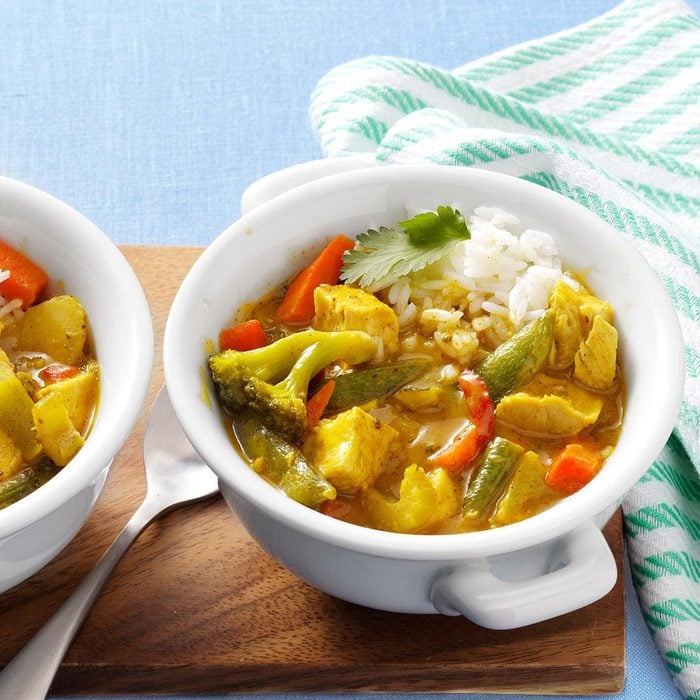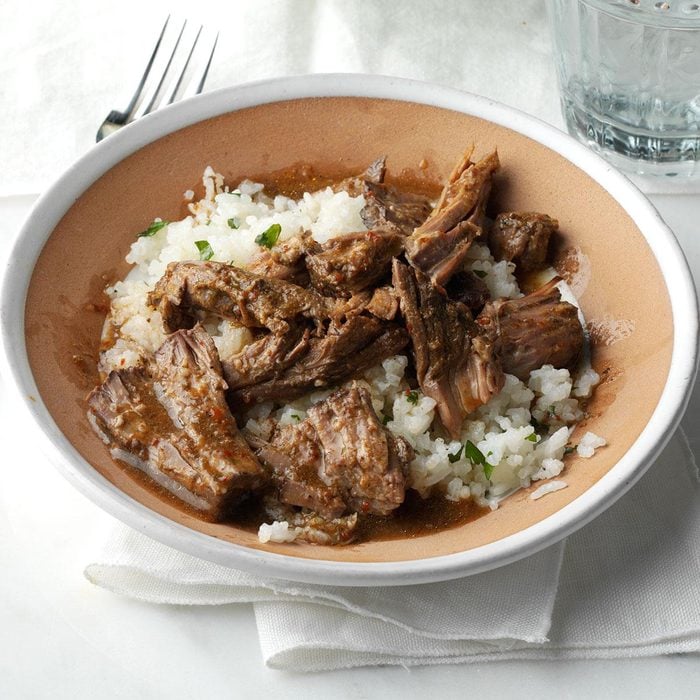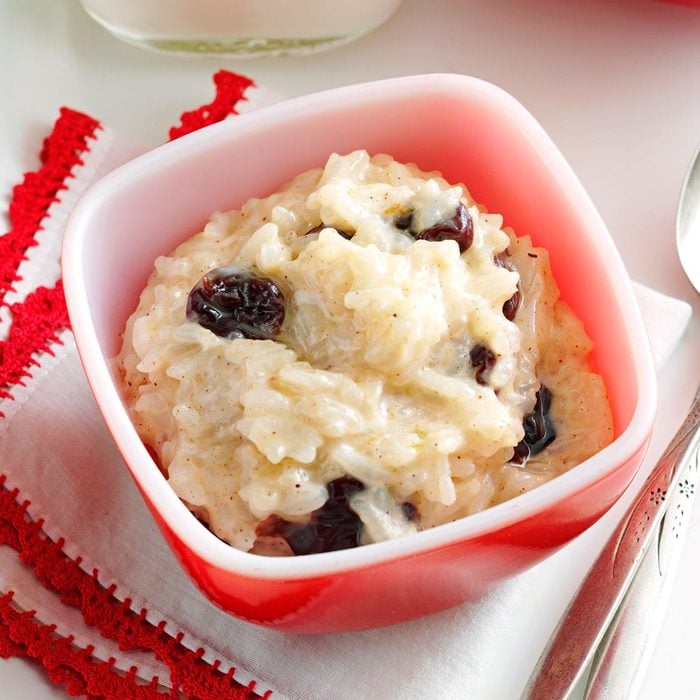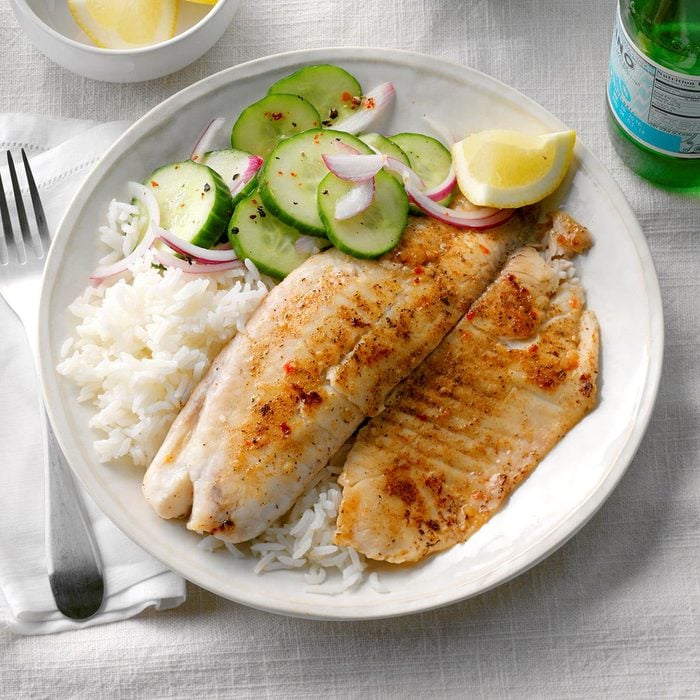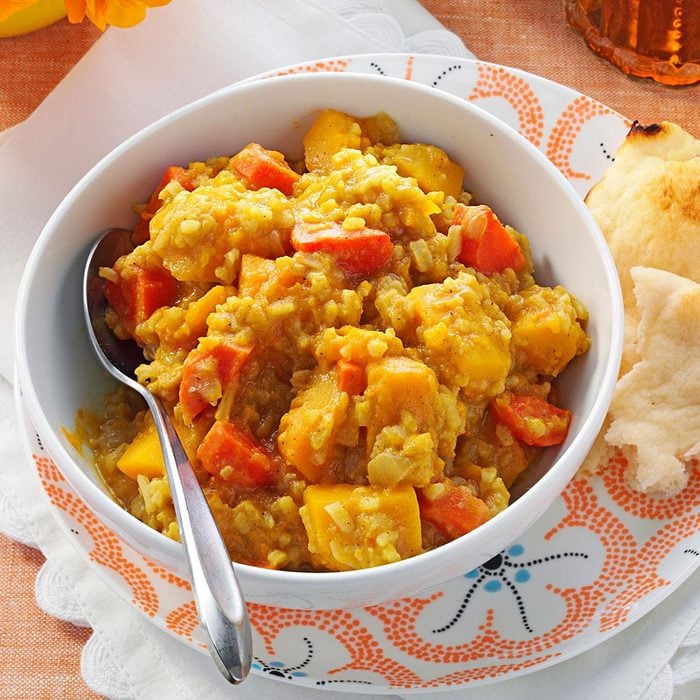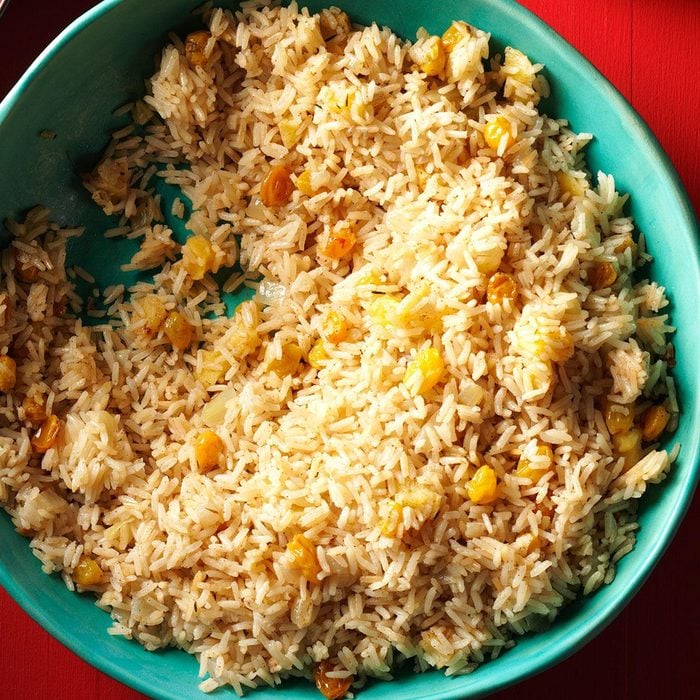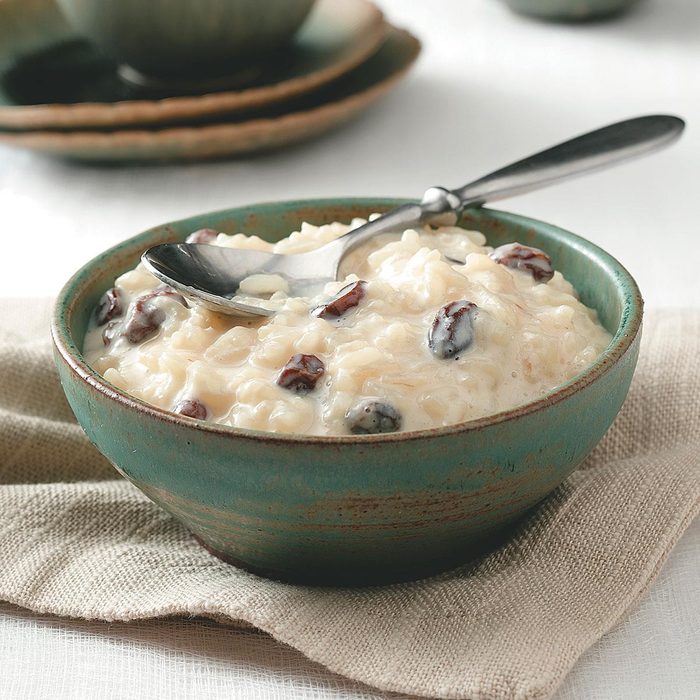How to Cook Jasmine Rice
Updated: Apr. 17, 2023

Whether you're a rice cooker loyalist, an Instant Pot fanatic or prefer a good ol' fashioned stovetop method, we've got you covered. This guide explains how to cook jasmine rice, step by step.
Over the last decade or so, jasmine rice has found its way into pantries across the US. This fragrant, long grain rice is easy to cook and incredibly versatile. From salads to pilafs, the possibilities are truly endless!
In this guide, we’ll walk you through the basics of cooking jasmine rice, along with some tips and tricks that will help you get perfectly cooked, fluffy rice. To keep things simple, we’ll explain how to cook one cup of jasmine rice using three different methods: rice cooker, Instant Pot and stovetop.
What Is Jasmine Rice?
Jasmine rice is a long grain rice that is primarily grown in Thailand. It’s often used in South and Southeast Asian cooking, as well as the Middle Eastern cuisines where rice takes center stage. It has a distinct floral aroma, which is often attributed to the origins of its name. However, the name “jasmine” actually comes from its resemblance to the color of the jasmine flower, rather than its fragrance!
This fragrance fades over time, so the fresher the jasmine rice, the more aromatic it will be. This is why “new crop,” or recently harvested, jasmine rice is highly coveted and sold at a premium.
Jasmine Rice vs. Basmati Rice
Like jasmine rice, basmati is also a fragrant long grain variety, but it’s mainly used in India, Bangladesh and Pakistan. Both jasmine and basmati are especially aromatic, with a pandan-like fragrance. However, jasmine is more sharp and floral compared to basmati rice. Uncooked jasmine rice grains have more rounded tips and edges, whereas basmati grains are much longer and thinner.
When cooked, neither is particularly sticky, though basmati grains remain a bit more distinct due to their lower starch content.
You can use jasmine rice to make copycat Chipotle rice!
How to Cook Jasmine Rice in a Rice Cooker
You’ll need:
- 1 cup jasmine rice
- 1 cup water
Step 1: Rinse the rice
Place a bowl in the sink and rinse one cup of jasmine rice in a colander or fine mesh sieve with cold water. Once the water in the bowl runs clear, the rice is ready to cook. Learn how to wash rice in the right manner.
Step 2: Put the rinsed rice in the rice cooker
Add the rice to the rice cooker, along with one cup of water. Be sure to use the same measuring cup for both your rice and water.
Test Kitchen tip: These are the best rice cookers out there.
Step 3: Follow instructions on the rice cooker
Close the lid and follow the instructions on your rice cooker. The entire cooking process takes about 15-20 minutes. Once you press start, DO NOT open the lid because you want to keep all that steam and moisture inside.
Step 4: Let rest
Most rice cookers will make a sound indicating that the rice is done. Once your rice cooker beeps, let the rice sit in the cooker for about 5-10 minutes. This step is crucial in order to let the rice soak up all the remaining moisture. Then, open the lid and fluff the rice using a fork or the paddle that came with your rice cooker.
How to Cook Jasmine Rice in an Instant Pot
You’ll need:
- 1 cup jasmine rice
- 1 cup water
Step 1: Rinse the rice
Rinse one cup of rice until the water runs clear.
Step 2: Put the rinsed rice in your Instant Pot
Add one cup of water using the same measuring cup you used to measure your rice.
Step 3: Program your Instant Pot
Once you’ve closed the lid, turn the steam release valve to “sealing.” You can cook your rice by manually setting your Instant Pot on high pressure, but I prefer sticking to the handy “rice” setting. It’s already programmed so you don’t have to set a timer.
Once the timer is up, be sure to let the rice rest for 10 minutes before opening the lid.
Step 4: Fluff the rice
After 10 minutes, open the lid and fluff the rice using a fork.
How to Cook Jasmine Rice on the Stove
You’ll need:
- 1 cup jasmine rice
- 1-1/2 cups water
Step 1: Rinse the rice
Rinse one cup of rice until the water runs clear. Set aside.
Step 2: Bring the water to a rolling boil
In a heavy-bottomed pot on high heat, bring the water to a rolling boil. I like to start with 1-1/2 cups and add more as needed—it’s always easier to add than to take away.
Step 3: Add the rice
Once the water is boiling, add the rinsed rice and bring it back up to a boil. Lower the heat to medium-low and cover the pot with a lid.
Step 4: Cook the rice
Let the rice cook for about 15 minutes over medium-low heat. Try not to take the lid off, at least for the first 10-12 minutes, or the steam will escape, resulting in unevenly cooked rice. After your rice has fully absorbed all the water, you can check if it’s cooked by pressing one grain between your fingers. If it’s evenly mushed, then you know it’s done. But, if it leaves behind a tiny white grain, add a few tablespoons of water and cook again for 2-3 minutes.
Step 5: Let rest
Once your rice is fully cooked, turn the heat off but keep the lid on for about 10 minutes. Then, fluff the rice using a fork.
Tips for Making Jasmine Rice
Do you rinse or soak jasmine rice before cooking?
This topic is a point of contention for many because, frankly, there isn’t a one-size-fits-all approach to rinsing or soaking jasmine rice. If you scour the internet, you’ll find conflicting information about whether to rinse or soak. It’s important to know the textures and flavors that you desire in the finished dish, and how soaking or rinsing could affect that.
By soaking the rice, you soften the grains and introduce moisture prior to the cooking process, which can reduce the cooking time quite a bit. However, a 30-minute soak will definitely agitate the starch molecules and result in stickier rice with less distinct grains. Soaking can also affect the overall flavor of cooked jasmine rice. The longer it’s on the heat, the less aromatic it will be. So, by soaking the rice beforehand, you could prevent the loss of some of its flavor.
The rinsing method, which is my preference, is a lot quicker and guarantees fluffy rice with distinctive grains. Rinsing removes the starch from the surface of the grains and keeps them from sticking together. The best way to know when the rice is rinsed enough is to place a bowl (preferably a clear bowl) in the sink as you rinse the rice with cold water. The bowl helps you see when the water turns from murky to clear—a telltale sign that it is now ready to cook.
What is the ratio of water to jasmine rice?
It’s important to take the cooking method into consideration. A sealed vessel (like an Instant Pot or rice cooker) requires a 1:1 ratio because there’s practically no loss of moisture in the cooking process. So, for every one cup of rice, you would need one cup of water. However, if you chose to cook your rice on a stovetop, the ratio should be 1:1-1/2 or 2. A little extra water is necessary to make up for the moisture and steam that can escape during the cooking process.
When cooking rice on a stovetop, you can also use the knuckle test to measure the amount of water. Growing up in Bangladesh, this is the only method I saw my mother and grandma use. Though I was a little skeptical at first, I’ve fully transitioned to the knuckle test because it works for almost any type of rice.
Here’s how to do it:
After adding the desired amount of rice to the pot, use your index finger to touch just the surface of the rice. Then add water until it hits your first knuckle. That’s how much water you should use!
Do I need to fluff the rice?
No matter how you cook your jasmine rice, you should always fluff it, preferably using a fork. Fluffing prevents clumping and results in evenly cooked grains.
Learn more about how to cook rice.


















